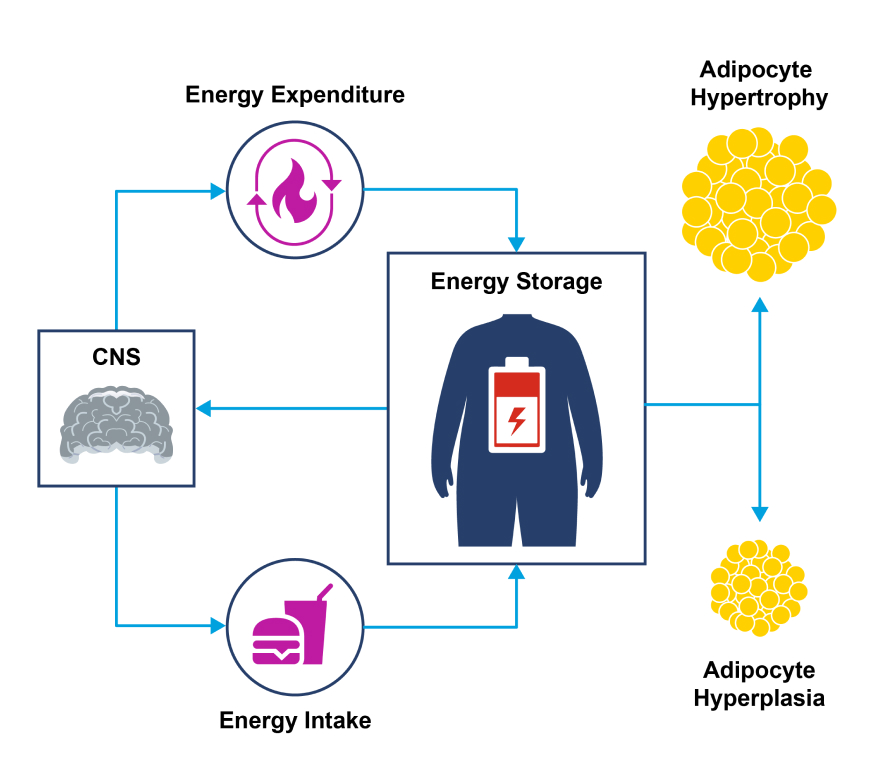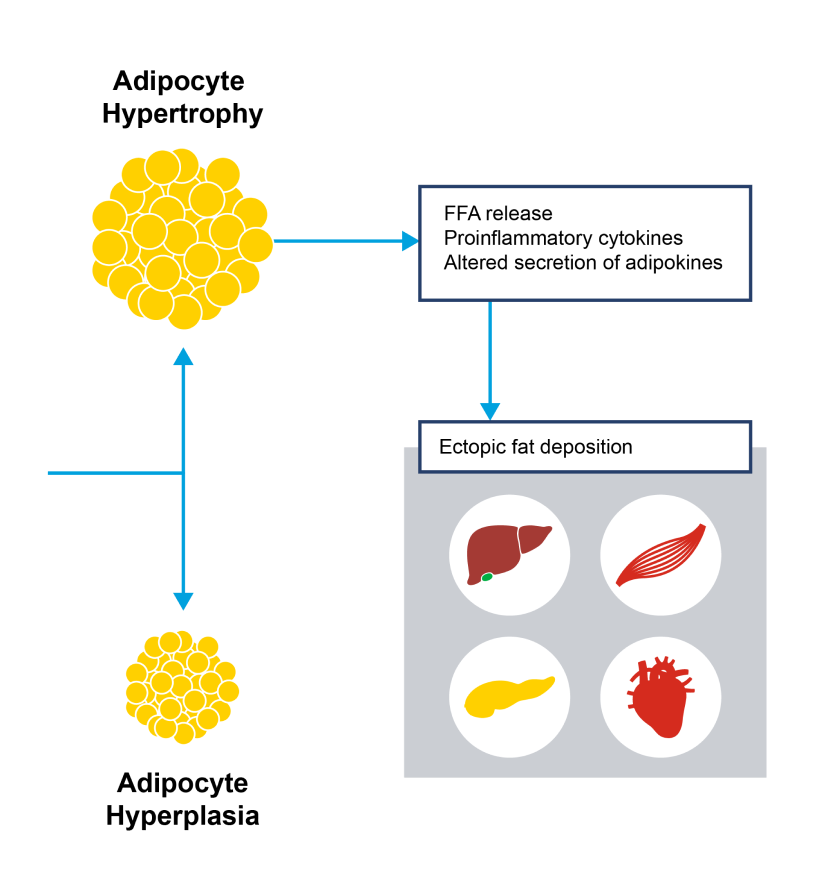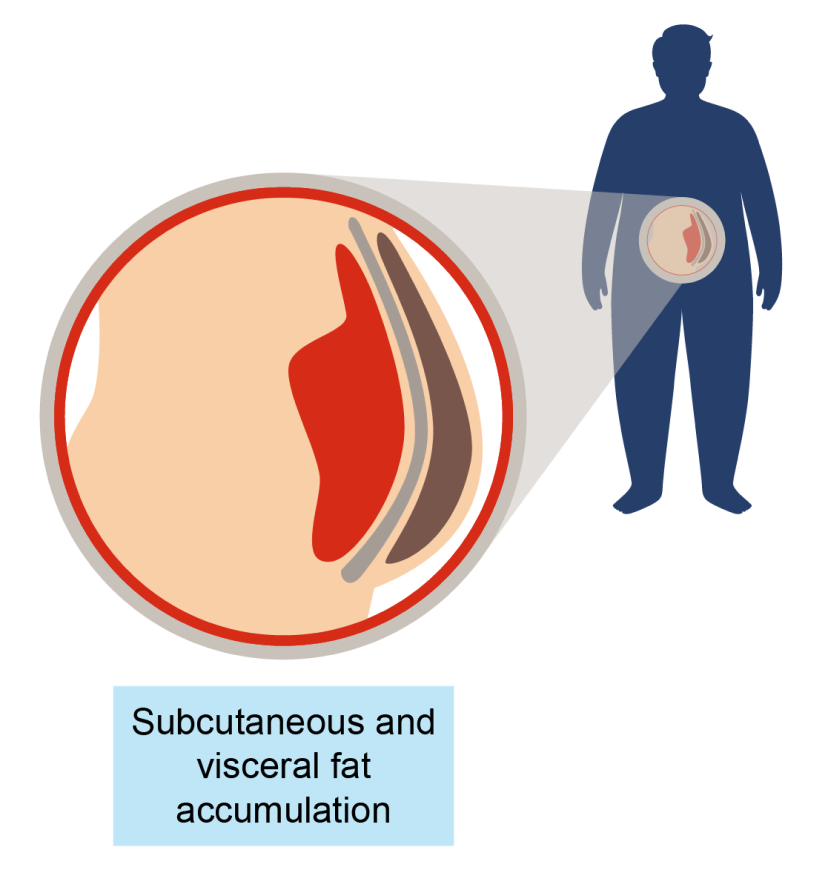Obesity Is a Disease
Pathophysiology of Obesity
Emerging data suggests that the neuroendocrine regulation of central nervous system (CNS) pathways involved with food intake, energy expenditure, and body weight may be impaired in obesity.1 Under normal physiologic conditions, the dietary energy intake required to maintain energy homeostasis varies by age, gender, body size, genetic factors, activity, and ambient temperature.2 These inter- and intra-individual variations in energy needs are, in principle, reflected in appetite and food intake.3 Prolonged imbalance in energy homeostasis is the fundamental cause for pathophysiological changes observed during obesity.4 Excess energy is stored as lipid in adipocytes, and chronic positive energy balance may lead to either adipocyte hyperplasia (increased number of adipocytes) or adipocyte hypertrophy (increased size of adipocytes).5




References
- Theilade S, Christensen MB, Vilsbøll T, Knop FK. An overview of obesity mechanisms in humans: Endocrine regulation of food intake, eating behaviour and common determinants of body weight. Diabetes Obes Metab. 2021;23(1):17-35.
- National Research Council (US) Subcommittee. 3. Energy. Recommended Dietary Allowances: 10th Edition. National Academies Press (US). 1989;24-38.
- Borrelli R, Simonetti MS, Fidanza F. Inter- and intra-individual variability in food intake of elderly people in Perugia (Italy). Br J Nutr. 1992;68(1):3-10.
- Blüher M. Obesity: global epidemiology and pathogenesis. Nat Rev Endocrinol. 2019;15(5):288-298.
- Longo M, Zatterale F, Naderi J, et al. Adipose Tissue Dysfunction as Determinant of Obesity-Associated Metabolic Complications. Int J Mol Sci. 2019;20(9):2358.
- Drolet R, Richard C, Sniderman AD, et al. Hypertrophy and hyperplasia of abdominal adipose tissues in women. Int J Obes (Lond). 2008;32(2):283-291.
- Fox CS, Massaro JM, Hoffmann U, et al. Abdominal visceral and subcutaneous adipose tissue compartments: association with metabolic risk factors in the Framingham Heart Study. Circulation. 2007;116(1):39-48.
- de Ferranti S, Mozaffarian D. The perfect storm: obesity, adipocyte dysfunction, and metabolic consequences. Clin Chem. 2008;54(6):945-955.
- Maury E, Brichard SM. Adipokine dysregulation, adipose tissue inflammation and metabolic syndrome. Mol Cell Endocrinol. 2010;314(1):1-16.
- Ahmed B, Sultana R, Greene MW. Adipose tissue and insulin resistance in obese. Biomed Pharmacother. 2021;137:111315.
- Gutiérrez-Cuevas J, Santos A, Armendariz-Borunda J. Pathophysiological molecular mechanisms of obesity: a link between MAFLD and NASH with cardiovascular diseases. Int J Mol Sci. 2021;22(21):11629.
VV-MED-145555
Please rate your satisfaction with the content on the following statements:
Very Dissatisfied
Dissatisfied
Neutral
Satisfied
Very Satisfied